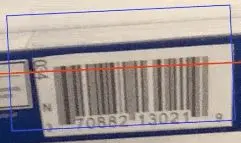Amlodipine 10 MG valsartan 160 MG Oral Tablet
1 INDICATIONS AND USAGE Amlodipine and valsartan is the combination tablet of amlodipine, a dihydropyridine calcium channel blocker (DHP CCB), and valsartan, an angiotensin II receptor blocker (ARB). Amlodipine and valsartan tablets are indicated for the treatment of hypertension, to lower blood pressure: • In patients not adequately controlled on monotherapy ( 1 ) • As initial therapy in patients likely to need multiple drugs to achieve their blood pressure goals ( 1 ) Lowering blood pressure reduces the risk of fatal and nonfatal cardiovascular events, primarily strokes and myocardial infarctions. 1.1 Hypertension Amlodipine and valsartan tablets are indicated for the treatment of hypertension, to lower blood pressure. Lowering blood pressure reduces the risk of fatal and nonfatal cardiovascular events, primarily strokes and myocardial infarctions. These benefits have been seen in controlled trials of antihypertensive drugs from a wide variety of pharmacologic classes, including amlodipine and the angiotensin II receptor blocker (ARB) class to which valsartan principally belongs. There are no controlled trials demonstrating risk reduction with amlodipine and valsartan tablets. Control of high blood pressure should be part of comprehensive cardiovascular risk management, including, as appropriate, lipid control, diabetes management, antithrombotic therapy, smoking cessation, exercise, and limited sodium intake. Many patients will require more than 1 drug to achieve blood pressure goals. For specific advice on goals and management, see published guidelines, such as those of the National High Blood Pressure Education Program’s Joint National Committee on Prevention, Detection, Evaluation, and Treatment of High Blood Pressure (JNC). Numerous antihypertensive drugs, from a variety of pharmacologic classes and with different mechanisms of action, have been shown in randomized controlled trials to reduce cardiovascular morbidity and mortality, and it can be concluded that it is blood pressure reduction, and not some other pharmacologic property of the drugs, that is largely responsible for those benefits. The largest and most consistent cardiovascular outcome benefit has been a reduction in the risk of stroke, but reductions in myocardial infarction and cardiovascular mortality also have been seen regularly. Elevated systolic or diastolic pressure causes increased cardiovascular risk, and the absolute risk increase per mmHg is greater at higher blood pressures, so that even modest reductions of severe hypertension can provide substantial benefit. Relative risk reduction from blood pressure reduction is similar across populations with varying absolute risk, so the absolute benefit is greater in patients who are at higher risk independent of their hypertension (for example, patients with diabetes or hyperlipidemia), and such patients would be expected to benefit from more aggressive treatment to a lower blood pressure goal. Some antihypertensive drugs have smaller blood pressure effects (as monotherapy) in black patients, and many antihypertensive drugs have additional approved indications and effects (e.g., on angina, heart failure, or diabetic kidney disease). These considerations may guide selection of therapy. Amlodipine and valsartan tablets are indicated for the treatment of hypertension. Amlodipine and valsartan tablets may be used in patients whose blood pressure is not adequately controlled on either monotherapy. Amlodipine and valsartan tablets may also be used as initial therapy in patients who are likely to need multiple drugs to achieve their blood pressure goals. The choice of amlodipine and valsartan tablets as initial therapy for hypertension should be based on an assessment of potential benefits and risks including whether the patient is likely to tolerate the lowest dose of amlodipine and valsartan tablets. Patients with stage 2 hypertension (moderate or severe) are at a relatively higher risk for cardiovascular events (such as strokes, heart attacks, and heart failure), kidney failure and vision problems, so prompt treatment is clinically relevant. The decision to use a combination as initial therapy should be individualized and should be shaped by considerations such as baseline blood pressure, the target goal and the incremental likelihood of achieving goal with a combination compared to monotherapy. Individual blood pressure goals may vary based upon the patient’s risk. Data from the high-dose multifactorial study [see Clinical Studies (14) ] provide estimates of the probability of reaching a blood pressure goal with amlodipine and valsartan tablets compared to amlodipine or valsartan monotherapy. The figures below provide estimates of the likelihood of achieving systolic or diastolic blood pressure control with amlodipine and valsartan tablets 10/320 mg, based upon baseline systolic or diastolic blood pressure. The curve of each treatment group was estimated by logistic regression modeling. The estimated likelihood at the right tail of each curve is less reliable due to small numbers of subjects with high baseline blood pressures. For example, a patient with a baseline blood pressure of 160/100 mmHg has about a 67% likelihood of achieving a goal of < 140 mmHg (systolic) and 80% likelihood of achieving < 90 mmHg (diastolic) on amlodipine alone, and the likelihood of achieving these goals on valsartan alone is about 47% (systolic) or 62% (diastolic). The likelihood of achieving these goals on amlodipine and valsartan tablets rises to about 80% (systolic) or 85% (diastolic). The likelihood of achieving these goals on placebo is about 28% (systolic) or 37% (diastolic). Amlodipine and Valsartan Figures 01 - 04
mylan pharmaceuticals inc.
DISCLAIMER:
"This tool does not provide medical advice, and is for informational and educational purposes only, and is not a substitute for professional medical advice, treatment or diagnosis. Call your doctor to receive medical advice. If you think you may have a medical emergency, please dial 911."
"Do not rely on openFDA to make decisions regarding medical care. While we make every effort to ensure that data is accurate, you should assume all results are unvalidated. We may limit or otherwise restrict your access to the API in line with our Terms of Service."
"This product uses publicly available data from the U.S. National Library of Medicine (NLM), National Institutes of Health, Department of Health and Human Services; NLM is not responsible for the product and does not endorse or recommend this or any other product."
PillSync may earn a commission via links on our site





16 HOW SUPPLIED/STORAGE AND HANDLING
AMLODIPINE AND VALSARtan Tablets, USP are available containing amlodipine besylate, USP (6.94 mg or 13.88 mg, equivalent to 5 mg or 10 mg of amlodipine respectively) with 160 mg or 320 mg of valsartan, USP providing for the following available combinations: 5 mg/160 mg, 10 mg/160 mg, 5 mg/320 mg or 10 mg/320 mg. The 5 mg/160 mg tablets are light orange, film-coated, oval, unscored tablets debossed with MX1 on one side of the tablet and blank on the other side. They are available as follows: NDC 0378-1721-93 bottles of 30 tablets The 10 mg/160 mg tablets are tan, film-coated, oval, unscored tablets debossed with MX2 on one side of the tablet and blank on the other side. They are available as follows: NDC 0378-1722-93 bottles of 30 tablets The 5 mg/320 mg tablets are orange, film-coated, capsule-shaped, unscored tablets debossed with MX43 on one side of the tablet and blank on the other side. They are available as follows: NDC 0378-1723-93 bottles of 30 tablets The 10 mg/320 mg tablets are light orange, film-coated, capsule-shaped, unscored tablets debossed with MX44 on one side of the tablet and blank on the other side. They are available as follows: NDC 0378-1724-93 bottles of 30 tablets Store at 20° to 25°C (68° to 77°F). [See USP Controlled Room Temperature.] Protect from moisture. Dispense in a tight, light-resistant container as defined in the USP using a child-resistant closure.
More pills like OVAL MX2